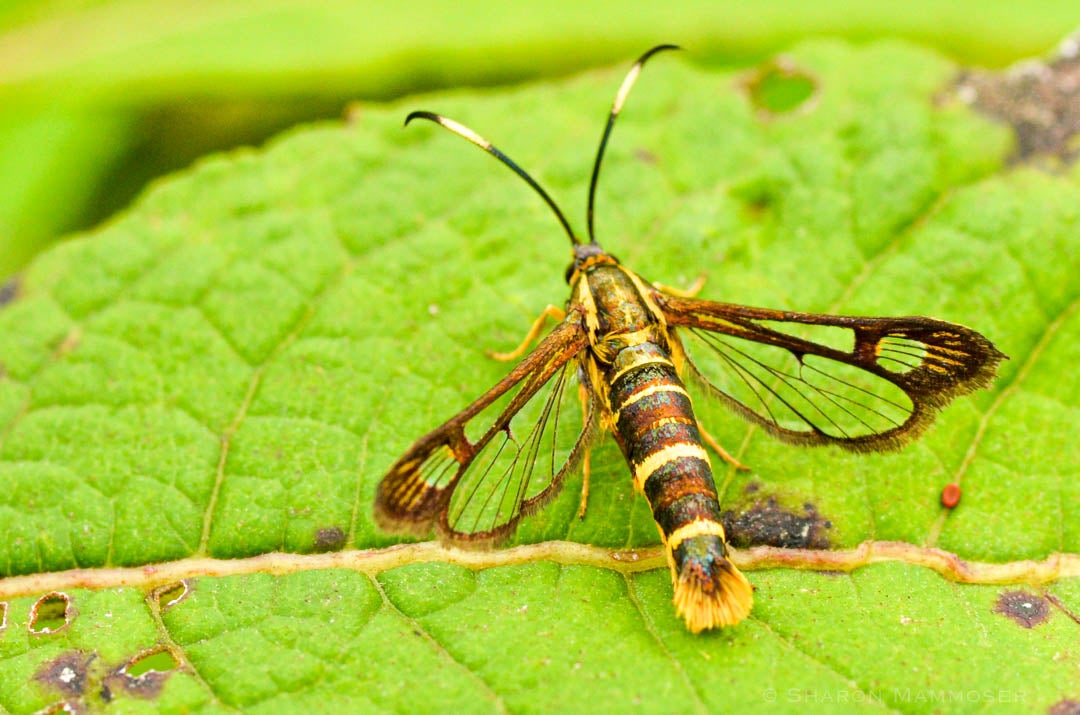Gardening for glorious moths
Published 12:14 pm Thursday, July 27, 2023

- The Ithaca Clearwing Moth
|
Getting your Trinity Audio player ready...
|
More people are learning the importance of making small changes in order to create wildlife sanctuaries and to be better guardians of our yards. Like planting milkweed, welcoming bats, and turning off your outdoor lights at night, the tide is turning. This includes rolling out the red carpet for moths.
It used to be that yards and gardens were all about looking nice with no thought to the animals who share our outdoor spaces. But these days, with books like Bringing Nature Home by Doug Tallamy and Gardening for Moths, by Jim McCormac and Chelsea Gottfried, change is coming, one yard at a time.
If you do any gardening research online you will find lots of articles about how to eliminate moths and caterpillars from your yard and garden. Holes in your leaves? Caterpillars on your flowers? Frass (caterpillar poop) raining down from the treetops? Article after article will tell you how to get rid of moths. Sadly, moths don’t have a very positive reputation.
But they should, especially if you like birds, because moths are the very base of the food web. Moths and their caterpillars are essential to a healthy, functioning ecosystem. Without moths and their caterpillars, we would not have birds, bats and many other species of animals.
Most people are shocked to learn that moths outnumber butterflies ten to one! Worldwide, there are 160,000 species of moths and about 17,500 of butterflies. Both insects belong to the order Lepidoptera which means “scaled wings” because their wings are covered with thousands of tiny, overlapping scales. Both butterflies and moths go through a metamorphosis. Most moths are nocturnal, have hairier bodies and have antennae that are threadlike or feathery. Butterflies have club-tipped or knobbed antennae. Many moths and butterflies visit flowers for the nectar, and both inadvertently pollinate those flowers, but the hairier bodies of moths make them much more efficient pollinators.
There are moths with fake eyes, moths with perfect camouflage hiding secret colors under their forewings, moths that mimic wasps and hummingbirds, moths with long tails meant to outsmart bats, moths that sleep in flowers, moths with a proboscis that’s nearly a foot long, and moths with antennae so perfect you’d swear they were feathers. There are yellow and pink moths, delicate green moths, and moths with intricate designs that look hand-painted. Our biggest moth in North America–the Cercropia– lives here in western NC and has a wingspan of 5-7 inches!
Gardening for moths is a natural step to take for anyone who loves the outdoors and wants to make a difference. When you intentionally put things in your yards that attract and support moths and their caterpillars, many other animals benefit. You benefit too because your yard will be a lot more interesting and busy with wildlife large and small. And thankfully, it’s not difficult to find flowers, trees, shrubs and other plants that add beauty AND support a diversity of wildlife, including moths.
Just like a butterfly caterpillar can’t just feed on anything green, the same is true of many moth caterpillars. They need to eat specific native plants. Here are some of the best plants you can grow to support beautiful moths and all the other wildlife that depend on them!
- St. John’s Wort: This shrub with showy, bright yellow flowers is also a favorite with many pollinators, including bees. It supports more than 18 kinds of moths.
- Violets: Violets are available in many colors and are easy to grow. They support more than 10 kinds of moths, as well as fritillary butterflies.
- Highbush Blueberry and Deerberry: These members of the Heath family support over 40 kinds of moths. Plus, blueberries are delicious!
- Common Serviceberry: This white-flowering tree not only supports over 25 kinds of moths, but also the red-spotted purple butterfly. The berries are favorites of cedar waxwings and bluebirds.
- Ninebark: Burgundy foliage makes this shrub a great alternative to the very invasive Burning Bush. More than 15 species of moths feed on its leaves.
- Evening Primrose: Fascinating yellow flowers open at dusk and then close again in the morning, offering nectar to night-flying moths.
- Buttonbush: Dense stands of gumball-shaped white flowers are a pollinator magnet. Buttonbush can replace the invasive Butterfly Bush. And it is a host plant for more than 10 moths.
By Sharon Mammoser
Sharon Mammoser is a naturalist and photographer with the website natureformysoul.com.





